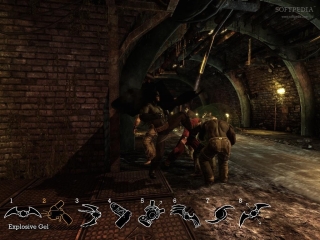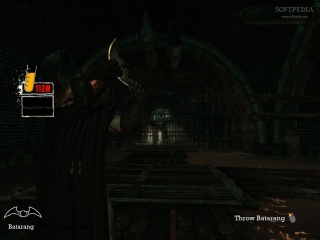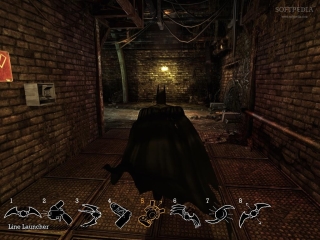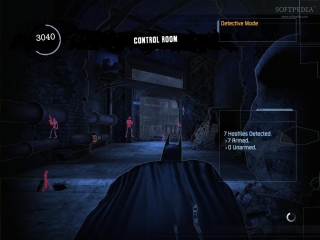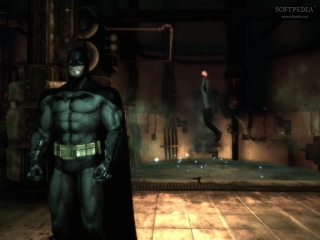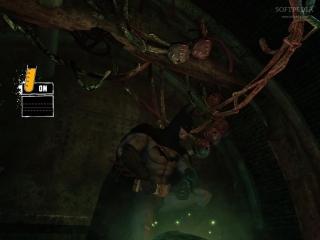There's not really a lot you can say on Batman: Arkham Asylum that hasn't yet crossed the globe a few times. It is the best comic book-inspired video up to date – and even has a world record to prove it – and it's a very good game on its own as well. The title managed to combine the stealth and combat aspects very nicely, without making either of them seem out of place.
You are Batman after all, so as long as they have nothing bigger than lead pipes, you can go toe to toe with an entire platoon. Give the psychos from Black Rock some guns and poor “Bat baby” ends up on the floor. Stealth is pretty basic and well thought of since there's little chance that anybody will look up at the gargoyles and spot the black cape wandering through the shadows.
The game has its share of brain-teases as well, brought to you by the helping hand of The Riddler, but it's fun, challenging and even if the plot isn't that brilliant, it does have a bit of a twist by placing you in the Arkham loony bin. It can also pride itself with some nice graphics.
The Xbox 360 and PlayStation 3 look great, but the PC got something extra. Nvidia's PhysX makes the objects and textures look crispier and lights seem a lot more natural, not like a flashlight stuck somewhere in the wall. Shadows, smoke, and fog have depth and add a lot of immersion to the game, along with being the only element that makes the place seem a little creepy. Except maybe for the Joker, the Titan virus, the insane convicts and the supper villains. But the console has those too, so we can't really award them to PhysX.
Nvidia’s PhysX technology may be available on consoles as well, but the PCs with an Nvidia GPU will be those that can make the best of it. Now, the whole thing has a nice ring to it, and the PhysX does great things but what exactly are those things? Well, to put it simple, the AGEIA PhysX processor revolves around the concept of reality. No matter how crisp graphics look in games, the world is always stale and unflinching. Objects may move, so do the props but those are usually predetermined animations or scripted actions triggered by the gamer. The relation between a material that should form an object and the way the object responds to different actions is vague and generally false. Empty cardboard boxes fall like rocks, clothes move like they have a metal frame that keeps them perfectly straight all the time.
The multithreaded PhysX engine was originally from AGEIA and was designed specifically for hardware acceleration in massively parallel environments. While AGEIA's PhysX processor had tens of cores, NVIDIA's GPUs have as many as 128 cores today, so they can easily make the best of the PhysX software. More importantly, the GPU architecture is a more natural fit than a CPU because of the highly parallel and interactive nature of game physics. By relying on the graphical processing unit more than on the CPU, it means that future video cards will still be able to take advantage of this technology.
All these things are nothing more than details in the game, but put together they mean a lot. Batman's cape feels like it's made of cloth, not plastic, inside Batman's corrupted mind debris acts and moves in a very compelling manner and acts accordingly to the twisted environment you're in. PhysX isn't what made Batman a great game, but it did add the finishing touches.

 14 DAY TRIAL //
14 DAY TRIAL // 